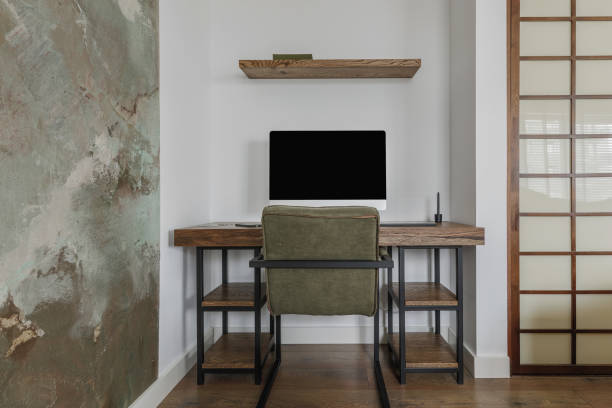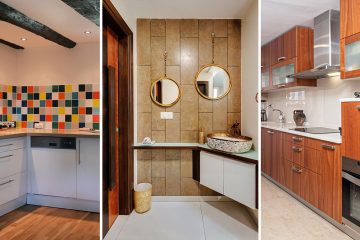Wooden floor in bathroom

Introduction
The idea of having wooden flooring in a bathroom might raise eyebrows, but it’s a design choice that can add both style and warmth to your space. In this guide, we’ll explore the advantages, types, and considerations of using wooden floors in bathrooms, ensuring that your design remains both practical and visually appealing.
Aesthetic Appeal
Wooden flooring brings a timeless and elegant aesthetic to any room, including the bathroom. The natural beauty of wood adds warmth and character, creating a cozy and inviting atmosphere.
Warmth and Comfort
Stepping onto a wooden floor in the morning is a stark contrast to cold tiles. Wood provides a comfortable and warm surface, making it a delightful experience for your feet, especially during colder seasons.
Durability and Longevity
Contrary to common belief, certain types of wooden flooring can be durable and long-lasting in bathroom settings. Properly sealed and maintained wood can withstand the challenges of moisture and humidity.
Engineered Wood
Engineered wood is a popular choice for bathroom flooring due to its layered construction, providing enhanced stability. It is more resistant to moisture compared to solid wood, making it suitable for bathroom environments.
Laminate Wood
Laminate wood flooring offers a cost-effective alternative that mimics the appearance of real wood. It is relatively water-resistant, but care should be taken to prevent prolonged exposure to moisture.
Vinyl Plank Flooring
Vinyl plank flooring is a waterproof option, making it an excellent choice for bathrooms. It convincingly imitates the look of wood while providing easy maintenance and durability.
Water-Resistant Options
When selecting wooden flooring for your bathroom, opt for water-resistant options. Engineered wood and vinyl plank flooring are particularly well-suited for areas with high humidity and moisture.
Maintenance Considerations
Consider the maintenance requirements of different types of wooden flooring. Some may need periodic sealing, while others may only require regular cleaning. Choose a flooring option that aligns with your lifestyle and maintenance preferences.
Budget-Friendly Choices
If you’re on a budget, laminate wood flooring can offer a cost-effective solution without compromising on style. Evaluate your budget constraints while exploring the wide range of available options.
Proper Subfloor Preparation
Ensure that the subfloor is dry, clean, and level before installing wooden flooring. Proper subfloor preparation is crucial for the stability and longevity of the wood in a bathroom setting.
Use of Waterproof Sealant
Applying a waterproof sealant is essential to protect the wood from moisture. This additional layer helps create a barrier, preventing water from seeping into the wood and causing damage.
Professional Installation vs. DIY
While DIY installation is possible for those with experience, hiring a professional ensures that the installation is done correctly. Professionals can also provide valuable advice on the best practices for maintaining wooden bathroom floors.
Regular Cleaning Routine
Establish a regular cleaning routine to keep your wooden bathroom floors in top condition. Use a soft, damp cloth or a mop with a mild cleaning solution to remove dust and dirt.
Dealing with Water Spills
Promptly wipe up any water spills to prevent potential damage. While water-resistant, prolonged exposure to standing water can still harm the wood. A quick clean-up ensures the longevity of your wooden floors.
Periodic Sealing
Depending on the type of wood and finish, consider periodic sealing to maintain the protective layer. This additional step can enhance the water resistance of your wooden bathroom floors.
Neutral Color Palette
Opt for a neutral color palette to complement the warmth of wooden flooring. Neutral tones create a harmonious and timeless look, allowing the natural beauty of the wood to shine.
Incorporating Rugs and Mats
Place rugs and mats strategically in areas where water exposure is likely, such as near the shower or bathtub. This not only adds comfort but also protects the wooden floor from water splashes.
Balancing with Other Materials
Balance the wooden flooring with other materials in the bathroom. Incorporate elements like stone or tiles in areas with high water exposure to create a well-rounded and practical design.
Water Damage Worries
Properly sealed and maintained wooden flooring is resistant to water damage. Choosing water-resistant options and addressing spills promptly can alleviate concerns about water damage.
Slip Resistance
Contrary to popular belief, wooden floors can be slip-resistant. Choose finishes that offer texture, and strategically place rugs or mats in areas where slipperiness might be a concern.
Humidity Considerations
Wooden floors can adapt to changes in humidity, but extreme fluctuations should be avoided. Proper ventilation in the bathroom helps maintain a stable environment for the wood.
Customer Testimonials
Explore the experiences of homeowners who have embraced wooden flooring in their bathrooms. Real-life testimonials can provide insights into the practicality and aesthetics of this design choice.
Before and After Photos
Visualize the transformative impact of wooden floors through before and after photos. Witness how wooden flooring can elevate the style and ambiance of different bathroom settings.
Conclusion
In conclusion, choosing wooden flooring for your bathroom is a stylish and practical decision. With the right type of wood, proper installation, and regular maintenance, you can enjoy the warmth and elegance of wooden floors without compromising on functionality.







